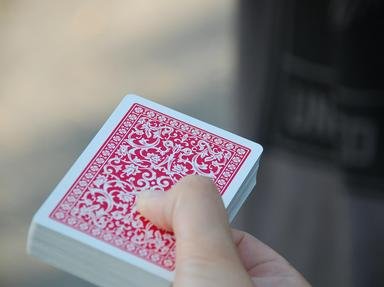Quiz Answer Key and Fun Facts
1. The origin of playing cards is debatable but what is definitely known is different countries had different suits. What comprised the suits in Spanish cards?
2. The French won the battle of the suits. There is now worldwide acceptance of hearts, diamonds, clubs and spades. It occurred because this group of symbols was the easiest set to reproduce?
3. The other court card besides the king and queen was the knave. Why was this changed to "jack"?
4. The king of hearts appears to be stabbing himself in the head. This is because this king represents Charlemagne who killed himself.
5. One of the theories of how the standard deck of cards became "standardised" was the alignment of the cards to time periods within a year. Which of the following options debunks that theory?
6. Playing cards were used for Allies to escape from German prison Camps in WWII. How did this occur?
7. In 18th Century Netherlands, a playing card was left with an abandoned baby. If there was only half a card, the parent would return one day; if the card was whole, the baby was fully abandoned?
8. The ace of spades is different to other cards as it is more elaborately decorated than any other. Why?
9. In the Vietnam War, American card manufacturers started producing card sets with only the ace of spades. Why?
10. The joker is a recent addition to card decks. It originated in the card game Euchre.
Source: Author
1nn1
This quiz was reviewed by FunTrivia editor
WesleyCrusher before going online.
Any errors found in FunTrivia content are routinely corrected through our feedback system.

